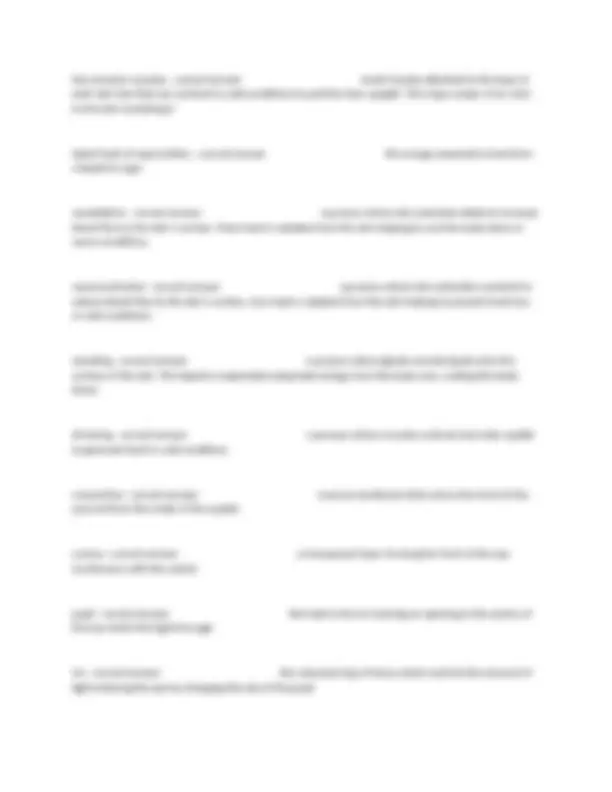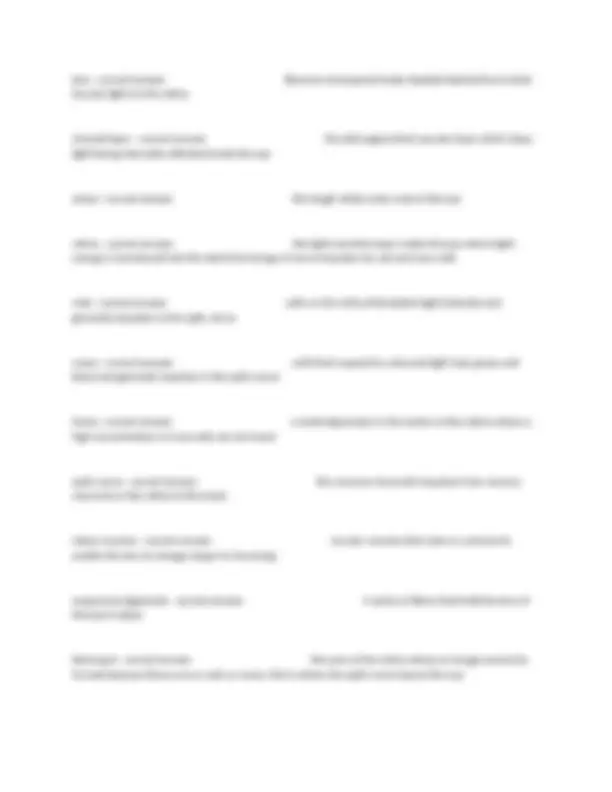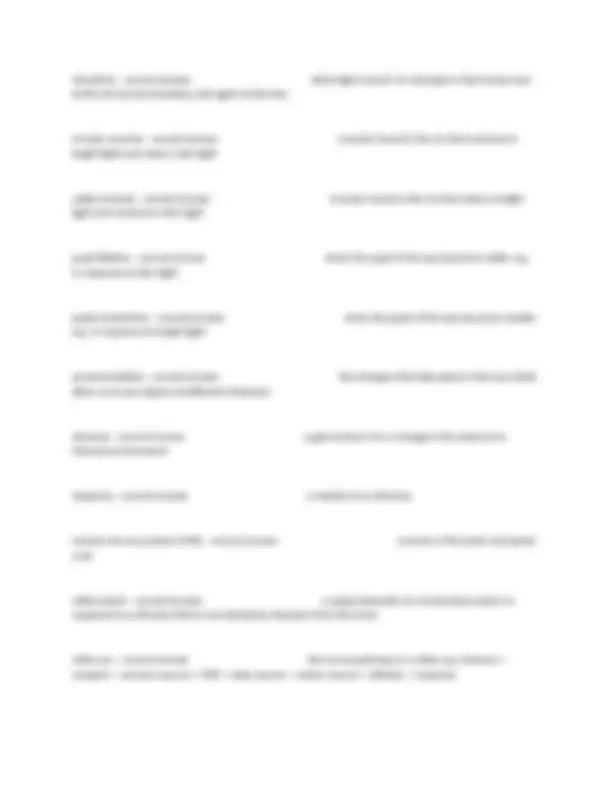





Study with the several resources on Docsity

Earn points by helping other students or get them with a premium plan


Prepare for your exams
Study with the several resources on Docsity

Earn points to download
Earn points by helping other students or get them with a premium plan
Community
Ask the community for help and clear up your study doubts
Discover the best universities in your country according to Docsity users
Free resources
Download our free guides on studying techniques, anxiety management strategies, and thesis advice from Docsity tutors
Edexcel IGCSE Biology Coordination and Response
Typology: Exams
1 / 6

This page cannot be seen from the preview
Don't miss anything!




pituitary gland - correct answer a gland located at the base of the brain. It secretes a number of different hormones into the blood, including those that regulate reproduction. hypothalamus - correct answer A region of the brain that coordinates the activity of the pituitary gland pancreas - correct answer the organ that helps control blood sugar by releasing hormones. An endocrine and exocrine gland situated behind the stomach. adrenaline - correct answer a hormone produced by the adrenal glands in preparation for fight or flight glucagon - correct answer a pancreatic hormone that raises blood sugar levels insulin - correct answer a pancreatic hormone that reduces blood sugar levels diabetes - correct answer a disease which involves the patient being unable to control blood sugar levels anti-diuretic hormone (ADH) - correct answer a hormone produced by the pituitary gland to help reabsorb water in the kidney testosterone - correct answer sex hormone which controls development of male secondary sexual characteristics progesterone - correct answer sex hormone produced in the ovaries and regulates the menstrual cycle
oestrogen - correct answer a sex hormone produced in the ovaries. It is responsible for controlling the development of female secondary sexual characteristics thyroxine - correct answer a hormone produced by the thyroid gland. It controls the body's metabolic rate nervous communication - correct answer communication in the body using nerve impulses that act on individual cells. Responses are usually short-lived. endocrine communication - correct answer communication in the body using hormones travelling slowly in the bloodstream that have widespread effects on different organs. Responses are usually longer-lasting. homeostasis - correct answer maintaining a constant internal environment. two examples of homeostasis - correct answer 1. Control of body water content 2. Control of body temperature endotherms - correct answer Animals that keep their body temperature constant, despite changes in the temperature of their surroundings i.e. 'warm blooded' negative feedback - correct answer when a change in body condition is detected, and a set of responses occurs to return the conditions to normal (to a set point). thermoregulatory centre - correct answer an area of the hypothalamus that monitors core body temperature and acts as the body's thermostat. skin epidermis - correct answer the outer layer of skin that consists of dead cells that stop water loss and protect the body against invasion by microorganisms.
lens - correct answer Biconvex transparent body situated behind the iris that focuses light on the retina choroid layer - correct answer the dark pigmented vascular layer which stops light being internally reflected inside the eye sclera - correct answer the tough white outer coat of the eye retina - correct answer the light-sensitive layer inside the eye where light energy is transduced into the electrical energy of nerve impulses by rod and cone cells rods - correct answer cells on the retina that detect light intensity and generate impulses in the optic nerve cones - correct answer cells that respond to coloured light (red, green and blue) and generate impulses in the optic nerve fovea - correct answer a small depression in the centre of the retina where a high concentration of cone cells can be found optic nerve - correct answer this neurone transmits impulses from sensory neurones in the retina to the brain ciliary muscles - correct answer circular muscles that relax or contract to enable the lens to change shape for focussing suspensory ligaments - correct answer A series of fibres that hold the lens of the eye in place blind spot - correct answer the area of the retina where an image cannot be formed because there are no rods or cones; this is where the optic nerve leaves the eye
refraction - correct answer when light is bent, for example in the human eye at the air/cornea boundary and again at the lens circular muscles - correct answer muscles found in the iris that contract in bright light and relax in dim light radial muscles - correct answer muscles found in the iris that relax in bright light and contract in dim light pupil dilation - correct answer when the pupil of the eye becomes wider e.g. in response to dim light pupil constriction - correct answer when the pupil of the eye becomes smaller e.g. in response to bright light accommodation - correct answer the changes that take place in the eye which allow us to see objects at different distances stimulus - correct answer a general term for a change in the external or internal environment response - correct answer a reaction to a stimulus central nervous system (CNS) - correct answer consists of the brain and spinal cord reflex action - correct answer a rapid automatic (or involuntary) action in response to a stimulus that is not started by impulses from the brain reflex arc - correct answer the nerve pathway of a reflex e.g. stimulus > receptor > sensory neuron > CNS > relay neuron > motor neuron > effector > response